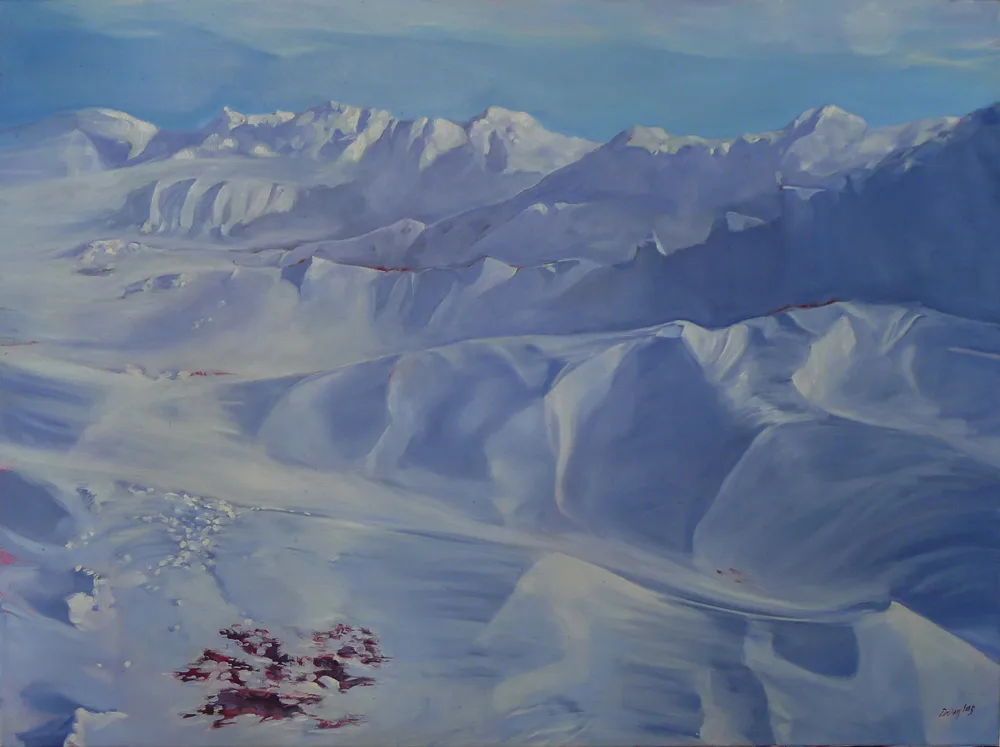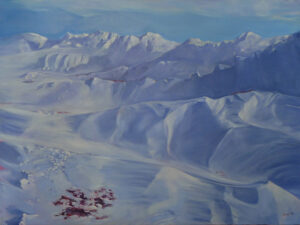
The ‘pictures’ folder on my laptop has more than 50,000 images in it. I don’t have an easy way to count my cell-phone images, but they date back to 2003. There are thousands more photos on our server.
The vast majority of these serve no purpose. They’re not a record of an event or people I love; they’re just a visual that caught my eye while I was hiking or painting. They were quickly seen and more quickly forgotten. Luckily, when I die, my kids won’t have to lug them to the dump in plastic bin bags; they’ll be gone with a click of the mouse.
Compared to other artists, I don’t take many reference pictures at all. That sometimes proves to be a problem when I have a thorny painting problem to solve, but often reference pictures serve to confuse rather than clarify issues.
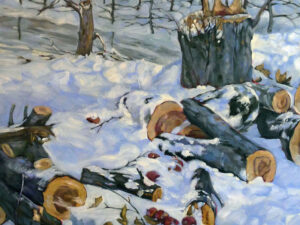
Great photos don’t mean great paintings
“Surprisingly, a great photo often doesn’t make for a great painting,” Bruce McMillan wrote this week. “It’s already a success as a photo. Most of my reference photos are failures as photos, but hold the elements that I want to enhance in a painting.”
A great photo-taken by you or someone else-has already done the design work. You’re constrained in composition and color because those elements are pre-determined. That’s one reason I discourage my students from using photos they find on the internet.
Of course, respecting copyright is the primary reason. Any photo or illustration you find in books, magazines, newspapers, or the internet is automatically protected by copyright law.
Even if that wasn’t true, I’d still discourage painting from other people’s photos. When you take a picture yourself, you have felt the dirt and smelled the air of the place. You understand the depth and breadth of its space. If you’ve taken the time to make a sketch, you comprehend it even more deeply.
You have none of that with a photo you grabbed from the internet. How much do you expect people to engage with an idea that you, the artist, have no relationship with? That comes back to my cardinal rule of painting: don’t be boring.
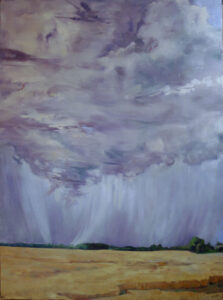
Take your own pictures where you can
Anyone can take a decent photo with a modern cell phone, as I prove every morning when I hike up Beech Hill. I was a ‘better’ photographer before I started painting full-time. My compositions were tighter. Then I realized that my best photos were cropped too tight to be useful for painting. There was always something left out that I needed.
Now when I take reference pictures, I make a point of shooting far more peripheral material than I would for an artistic shot. This is because I’ve outsmarted myself too many times by cropping out essential information in the viewfinder. Detail is generally unimportant in a reference photo, and most modern cameras (including the one in your cell phone) have far greater resolution than the artist ever needs.
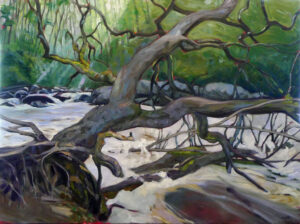
Flat, indirect light can be boring in a landscape painting, but it’s sometimes helpful in a reference photo. It allows you to create your own atmospherics. You’re never stuck fighting a lighting source that doesn’t work.
Reserve your spot now for a workshop in 2025:
- Advanced Plein Air Painting, Rockport, ME, July 7-11, 2025.
- Sea and Sky at Acadia National Park, August 3-8, 2025.
- Find Your Authentic Voice in Plein Air, Berkshires, MA, August 11-15, 2025.
- Immersive In-Person Fall Workshop, Rockport, ME, October 6-10, 2025.

